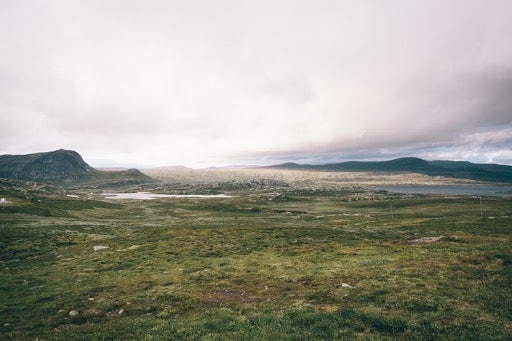How To Develop Land: A Simple Guide

47% of the United States is uninhabited land. Raw land is always a good investment but developing land is no easy task. Developing raw land can be complicated and require more due diligence. But if you’re willing to do the work, raw land can be a lucrative investment. To secure a solid land investment, read our guide to walk through the necessary steps of how to develop the land.
What is Raw Land Development?
Raw land is purchasing a property in its natural state with no improvements or utilities. Raw land development refers to your plan to develop, build, or hold onto raw land for long-term appreciation. Raw land can be used to:
- Sell as property
- Build a structure on and charge rent
- Sit on the land to let it appreciate
Regardless of how you plan to develop a parcel of raw land, you’ll want to research and evaluate its value before buying it.
Benefits of Developing Land
Raw land is a secure investment when adequately vetted. Even if you don’t see the return on it immediately after development, there are many benefits to owning land:
- Costs less to purchase and hold than a developed lot because it has minimal carrying costs, lower property taxes, and low maintenance costs.
- Less competitive than residential real estate because it is not immediately set up to earn income.
- Sellers often offer seller financing for raw land because banks are hesitant to loan money for vacant land.
- Appreciates well even in marginal market conditions because it is a hard asset that is a scarce resource that can always be held as a long-term investment.
- Offers lots of opportunities for how the land will be developed depending on zoning codes.
Raw land is a limited resource and will always be valuable. Although location does play a significant factor in how well it will appreciate. To determine its value or future value, you’ll need to research and evaluate the land.
Related Link: The Do’s and Don’ts of Buying Vacant Land

Evaluate the Land’s Value
Before purchasing the land, you will want to determine the return on investment for the property. The first step is assessing the value of the property.
Factors that can influence the value of the land are:
- Location
- Shape and size of the property
- Access to roads
- Access to utilities, sewers, and drinking water
- Contain trees and streams
- Drainage, contour, and grading of the property
- Climate and air quality
- Proximity to toxic waste, old wells or septic systems, or cemeteries
- Unknown moratoriums
- Proximity to airports, landfills, power plants, or train tracks.
See the National Association of Home Builders for a more comprehensive checklist for land development.
It’s important to vet each of these factors because each can significantly impact the property’s value. It is important to remember that the land you are looking at is vacant for a reason. And unless the seller has openly disclosed why, you’ll want to do your homework thoroughly.
Calculate the Total Cost of the Property
To determine the land’s profitability, you’ll need to get estimates of any costs the property may need for development, how it can be used for revenue and when you’ll be able to get a return on your investment. The total cost of the property includes:
- The sales price
- Property surveys
- Environmental impact studies
- Fees
- Permits
- Engineering services
- Soil tests
- Tree removal
- Grading and clearing
- Building access roads
- Utility installation
- Wells and or septic tanks
You’ll want to add up all the costs to get your total investment cost for the property. Lenders generally won’t loan more than 50% of the land’s purchase price. Make sure you have financing to cover all the costs.
Not sure which type of lot you want to build? Talk to My Site Plan to get quotes on either parking lot construction plan.
Related Link: What is the Cost of a Land Survey

Learn What the Land is Zoned For
This is a vital step of due diligence when developing land. You’ll need to examine local zoning codes to find out what the land is zoned for development. It will determine what the land can be used for and what types of structures you can build on the land:
- Single-Family
- Multi-family
- Condominium
- Commercial
- Agricultural
Depending on your plans for the land, zoning could ruin those plans.
Secure Financing
When buying raw land, you often have to have cash, or you’ll have to finance the property from the seller because banks usually won’t finance raw land purchases because they are seen as speculative investments. Because of this, many times, the seller will act as your lender and often offers below-market rates.
Financing for the property will largely be influenced by how you plan to develop it. Investors will want the loan-to-cost (LTC) for the property. This is how much money the lender will need to provide to obtain the property. Lenders generally will loan a maximum of 80-85% of the overall costs.
Build within Zoning Laws
Once you know how you want to develop the land, you’ll need to pay for horizontal development. This includes grading roads, installing utilities, and even constructing a building. You’ll want to have a schematic drawn to determine the most cost-effective way to develop the property.
During this phase, contractors are paid incrementally as tasks are completed. Lenders will often hold back 10% of the loan until the project is complete.
Land Development is a Stable Investment
Developing raw land can be a stable and lucrative investment, whether you plan to develop it right away or keep it for long-term appreciation. But for it to be a successful investment, you’ll need to research and evaluate the property’s earning potential.
My Site Plan has a team of experienced CAD designers who can create site plans for your land development project. Known for an excellent turnaround, My Site Plan can make a schematic that will work best for your property.
Do you need a site plan to obtain a construction permit? My Site Plan can create a plan for your land development project within 24 hours.
Related Link: My Site Plan Frequently Asked Questions
- Ryan Crownholm